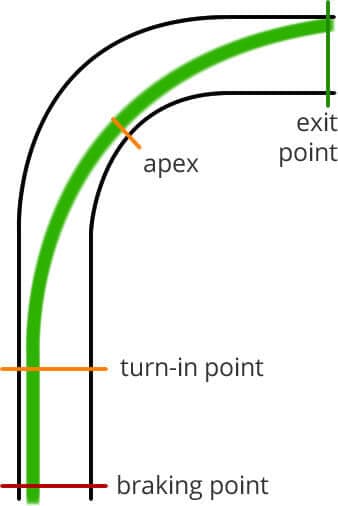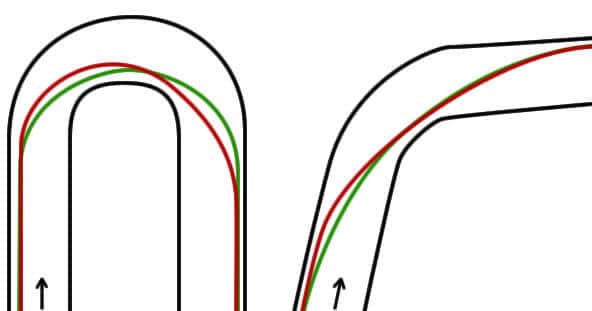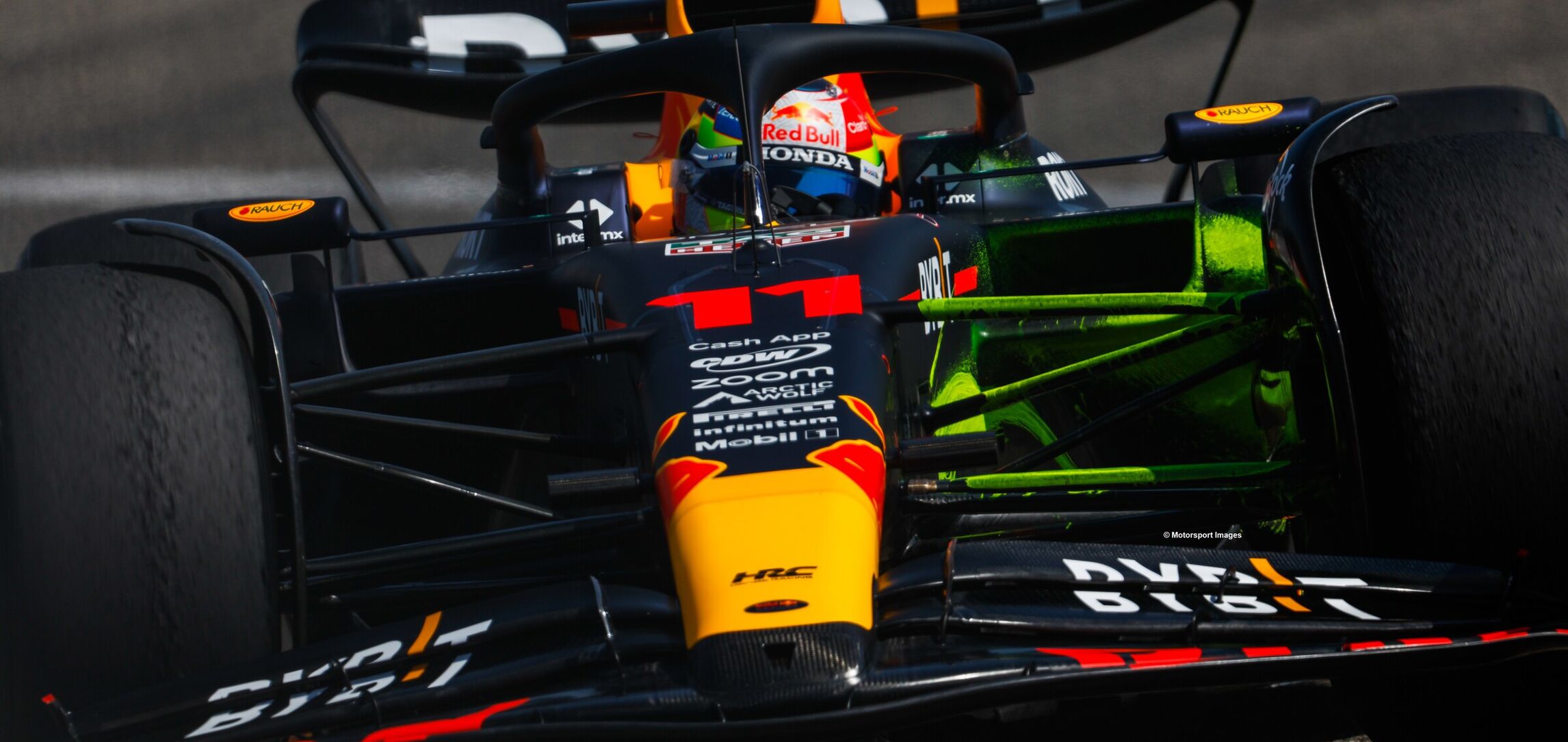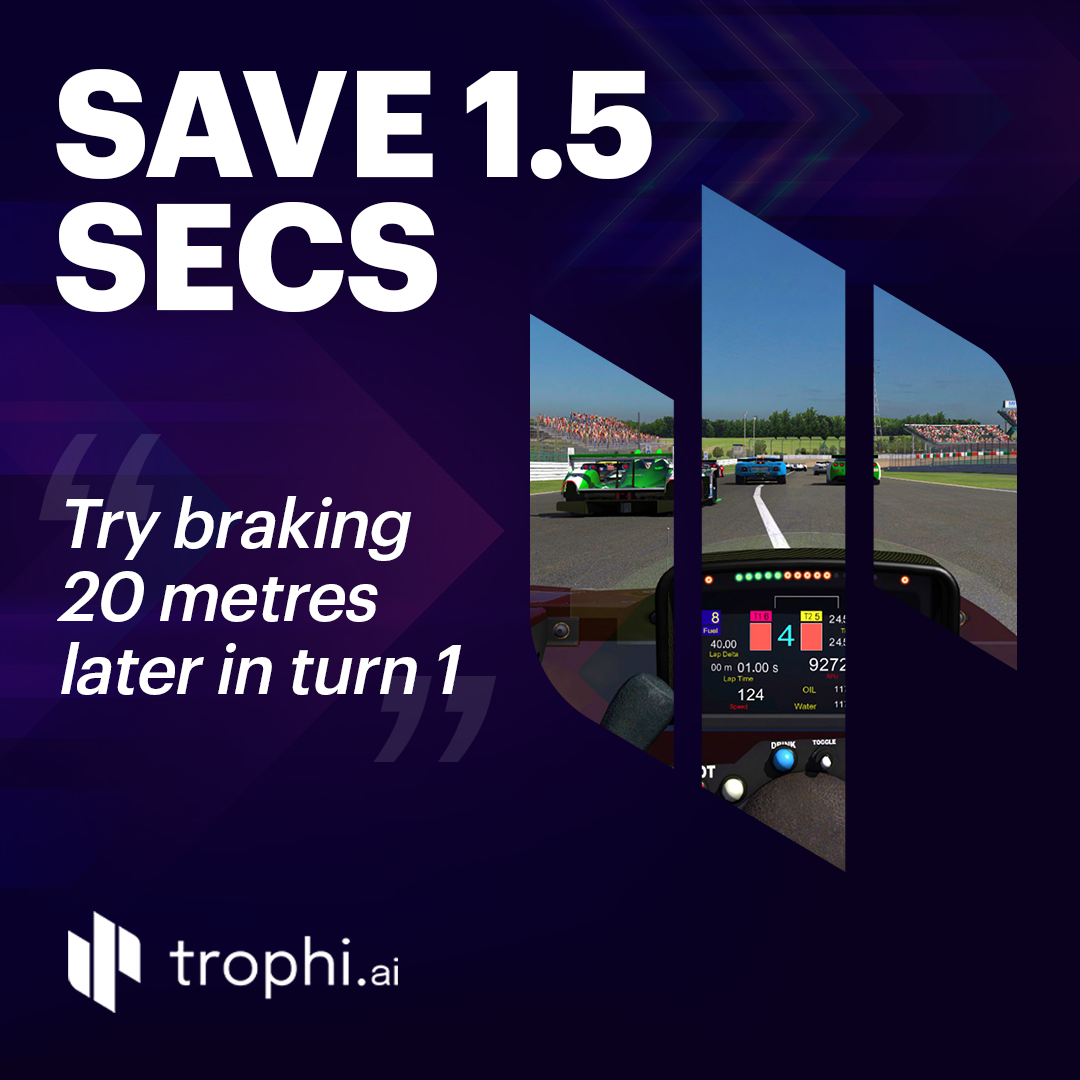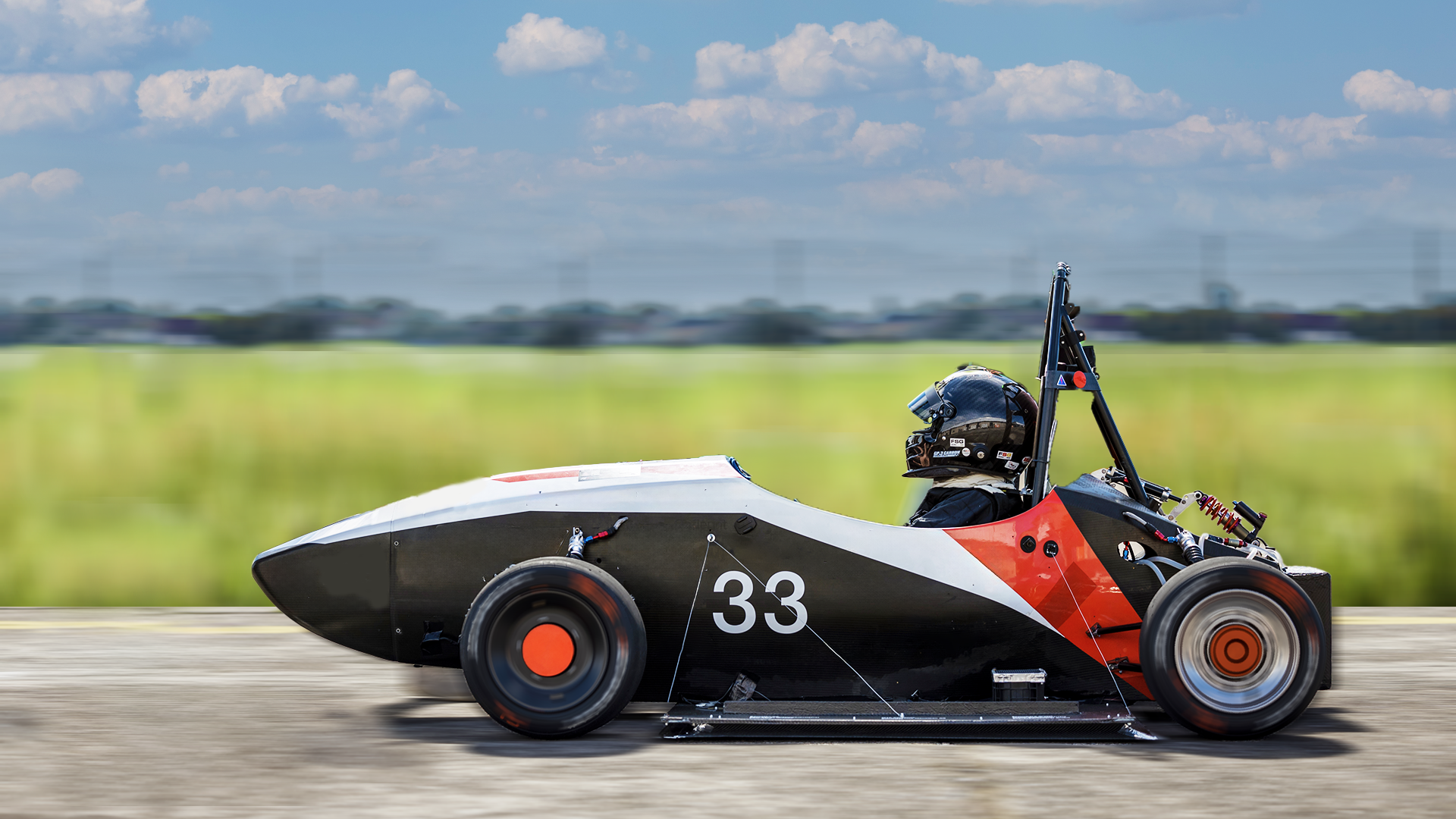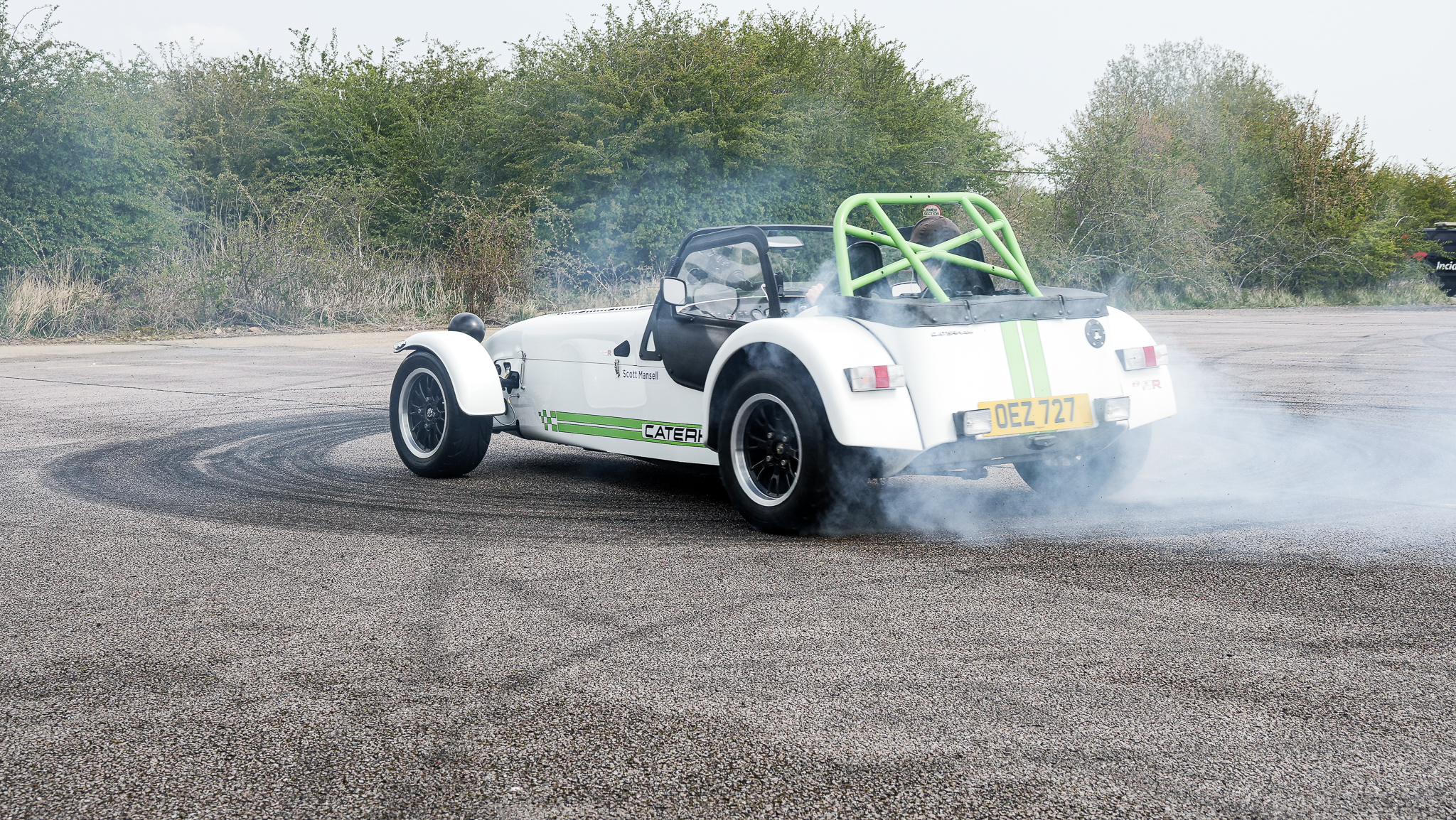How to Drive the Perfect Racing Line
How to drive the perfect racing line is a fundamental driving theory we need to master before we can be fast on circuit.
From the braking point, through turn-in, apex (clipping point) and exit, the racing line is critical to lap time.
Our first Driver’s Uni tutorials cover the very basics of circuit driving. Even if you’re an experienced circuit driver we recommend watching, as it’s important to understand the principles behind your driving.
This video tutorial will cover some racing line tips including:
- What is the racing line
- What is the apex of a corner
- The braking point, turn-in and exit phases of a turn
- The geometric line
- The ideal and fastest racing line
- Racing lines for hairpins, medium speed and fast corners
What is the Racing Line?
The racing line is the fastest line or arc through a corner on a race circuit. The trajectory of the racing line depends on the severity of the corner, how long the following straight is and what kind of car is being driven.
The goal is to always carry as much speed in the braking zone, through the corner and onto the next straight.
There are a few terms you’ll hear drivers talk about when describing a racing line. It’s straightforward, but it’s important that you know the key terms. The four main sections of a racing line are the braking point, turn-in point, apex or clipping point and the exit point.
Here’s a summary of how to take the racing line:
- Brake to maximum capacity at your braking point
- Move your vision to the apex point
- Turn-in your car at the turn-in point
- Make the apex of the ideal racing line
- Begin to introduce the accelerator
- Open up steering to the corner’s exit point
BRAKING POINT
The braking point is the position at which you begin to get on the brakes before a corner. Understanding the term is simple, however, picking the latest braking point possible and continuing to decelerate at 100% of the grip available is less so – we’ll cover braking in detail in a later tutorial. For the moment, know that the majority of your braking should be in a straight line, with the final release of the brake pressure requiring super smoothness.
TURN-IN POINT
Next up in our racing line process is the turn-in point – the point at which you turn into the corner. What’s important here is that you’re already looking towards the apex, so you know when and how hard to turn into the corner – again, we’ll cover this is more detail in a later tutorial.
Miss the perfect turn-in point and your lap time will suffer. Turn in too late and you won’t be able to carry as much speed through the corner, turn in too early, and you’ll cripple your exit speed.
APEX OF A CORNER
You’ll hear drivers talking about hitting the perfect apex, or about when they just missed it. The apex is the point at which you’re at the inside of the corner – it can also be referred to as the clipping point.
Most circuits will have a curb at the apex to stop greedy drivers (most of us) from running onto and over the grass. The curb is usually an excellent visual cue of where the apex is when you’re turning the car into the corner.
Once you’ve made it to the apex (if your racing line is correct) it will be time to begin getting back on the throttle. We’ll go into this in more detail later, but faster corners tend to have early apexes, and slow corners and hairpins will generally have late apexes.
EXIT POINT
The exit point is the point at which your car once again reaches the outside of the track. Once you’ve passed the apex, you should begin to increase throttle position and open up your steering angle accordingly – do this correctly and you’ll end up at the optimum exit point.
Now that we’ve got the main terms under our belt, let’s take a look at the theoretical best racing line, known as the geometric line.
The Geometric Racing Line
The geometric line is the most shallow arc possible through a corner. It uses every inch of the circuit, apexes in the centre of the turn and if you were driving it, you could keep a constant speed from turn-in all the way to the exit point.
Take a look at the diagram below – the green line is the most shallow arc and geometric best.
Although the geometric line is not the fastest way through almost all corners, explaining the theory serves a purpose in understanding something very simple about corners: the tighter the corner, the more steering input you require and the less speed you can carry through it.
Like I said, very simple, but something that’s important to mention. If you decrease the radius of a corner, you must decrease your speed through it.
Most drivers who are new to circuit driving do not use all of the circuit’s width. By doing this, they are making the corner tighter and, therefore, impossible to carry the maximum speed through it. Once they realise they can use more of the track, they go faster and this is a very simple win.
The geometric line is the fastest racing line through a corner if it’s in complete isolation with nothing before or after it. Luckily, race circuits are a bit more interesting than that and will have a corner or straight following the previous corner.
This means that the ideal racing line is altered to focus a little more on the exit speed of the corner. Carry extra speed here and you’ll continue to carry it all the way down the following straight, accumulating in a good reduction of lap time.
The Ideal Racing Line
The ideal line will turn-in and apex a little later than the geometric line and allow for a straighter and easier line from apex to exit – the more straight the racing line is here, the more you can accelerate and the faster you’ll hurtle yourself down the following straight.
With the geometric line, you can gain a few mph on entry, for let’s say 100m. The ideal racing line will loose a little on entry, but you’ll gain a few mph for, let’s say 500m, down the next straight – resulting in a larger win in lap time.
As you can see from diagram above (geometric line green, ideal line red), the ideal line turns into the corner a little later, turns sharper from
turn-in to the apex and then opens up the exit creating a straighter line after apex.
This creates numerous advantages:
- as the turn-in point is slightly later, you can brake a little later, saving lap time
- the amount of time you spend turning is reduced – a car is fastest in a straight line, so you want to optimise this
- because the car is turned earlier in the corner, the corner exit is opened up, and you can get to full throttle sooner
The only negative – compared to the geometric line – is that the car needs to turn a little sharper, meaning that the line’s radius is less and so our minimum speed is going to be somewhat slower. This slight loss in time is easily outweighed by the positives mentioned above.
To be entirely clear, take a look at the graph above. This shows speed vs distance for a car taking each racing line on the corner above – once again the green line is geometric and the red is the ideal.
As the cars are braking you can see both lines decreasing in speed, however, the red line is travelling a little faster as it’s been able to brake later due to the later turn-in point – time gain to the red (ideal) line.
Then, as we begin turning into the corner, you can see the green line carries more speed into the turn as it has a more open radius at this entry phase. The red line is below, has a slower minimum speed and more of a ‘v’ shape – time gain to the green (geometric) line.
As we’re reaching both apexes, the ideal line begins to speed up significantly quicker than the geometric line as it’s opened up the corner exit and can get to full throttle sooner. The size of the time gain here depends on how long the following straight is – the longer the straight, the bigger the time gain.
As you can see, the ideal racing line focuses on exit speed. With my coaching experience, it’s clear that this is an area where most drivers – beginners and experienced – can improve.
Most drivers are impatient and will try to make too big of a gain on corner entry, thereby destroying their exit speed. The trick here is to be patient, get the car turned and pointing out of the corner, and get on the throttle as soon as possible.
Difference in Racing Lines (slow and fast corners)
All corners are different. They may have bumps, camber, difficult kerbing and a whole range of differentiators. However, in general, the faster the corner, the closer the ideal racing line will be to the geometric line.
The fundamental reason for this is that the faster the corner is, the less you will be able to accelerate on the following straight. For example, take a car that has a maximum speed of 150 mph. When exiting a 40 mph hairpin onto the next straight, the car can accelerate by 110 mph, so you’ll want to accelerate out of the corner as soon as possible.
When exiting a corner that has a minimum speed of 100 mph, the same car can accelerate by only 50 mph – therefore opening up the exit creates less time gain than in a slow corner.
As you can see by comparing the two corners and corresponding racing lines (again geometric green, ideal red), the lines are significantly different in the hairpin where we need to focus on the exit speed and less different on the fast kink, where we’re trying to maintain momentum.
That’s it for this first tutorial. Thank you very much for reading and be sure to sign up to be informed when the next whiteboard tutorial is released. If you have any questions or comments, please get in touch and I’ll get back to you.

